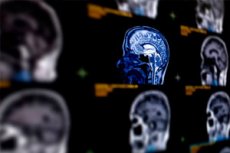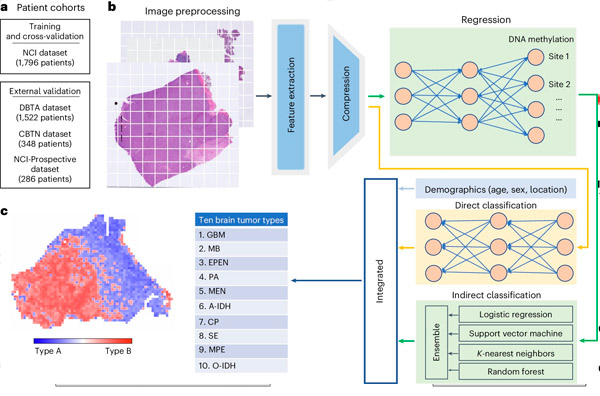New publications
Scientists have developed artificial intelligence to classify brain tumors
Last reviewed: 02.07.2025

All iLive content is medically reviewed or fact checked to ensure as much factual accuracy as possible.
We have strict sourcing guidelines and only link to reputable media sites, academic research institutions and, whenever possible, medically peer reviewed studies. Note that the numbers in parentheses ([1], [2], etc.) are clickable links to these studies.
If you feel that any of our content is inaccurate, out-of-date, or otherwise questionable, please select it and press Ctrl + Enter.

A new artificial intelligence tool for classifying brain tumours faster and more accurately has been developed by researchers from the Australian National University (ANU).
According to Dr. Dan-Thai Hoang, accuracy in diagnosing and classifying tumors is critical to effectively treating patients.
"The current gold standard for identifying different types of brain tumors is DNA methylation-based profiling," Dr. Hoang said.
“DNA methylation acts as a switch to control gene activity and determine which genes are turned on or off.
“But the time required to conduct this kind of testing can be a significant drawback, often requiring several weeks or more when patients may need to make quick decisions about therapy.

Overview of datasets and computational workflow. Source: Nature Medicine (2024). DOI: 10.1038/s41591-024-02995-8
“In addition, such tests are not available in almost all hospitals in the world.”
To address these issues, researchers from ANU, in collaboration with experts from the National Cancer Institute in the US, have developed DEPLOY – a way to predict DNA methylation and then classify brain tumours into 10 main subtypes.
DEPLOY uses microscopic images of a patient's tissue, called histopathological images.
The model was trained and tested on large datasets of approximately 4,000 patients from the US and Europe, published in the journal Nature Medicine.
“Amazingly, DEPLOY achieved an unprecedented accuracy of 95%,” said Dr. Hoang.
“In addition, when analyzing a subset of 309 particularly difficult-to-classify samples, DEPLOY was able to provide a diagnosis that was more clinically meaningful than that originally provided by pathologists.
"This highlights the potential role of DEPLOY in the future as an additional tool to complement the pathologist's initial diagnosis or even prompt a re-evaluation in case of discrepancies."
The researchers believe DEPLOY could eventually be used to classify other types of cancer.
The results of the study were published in the journal Nature Medicine.
